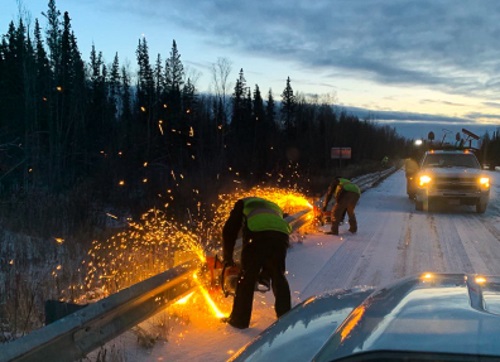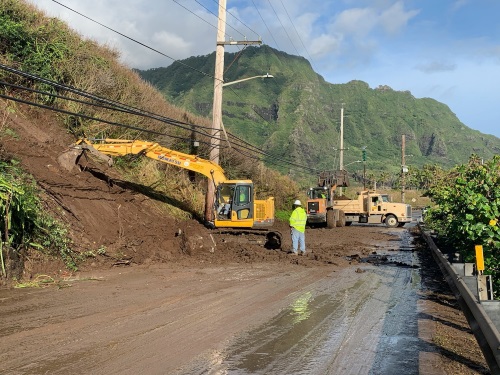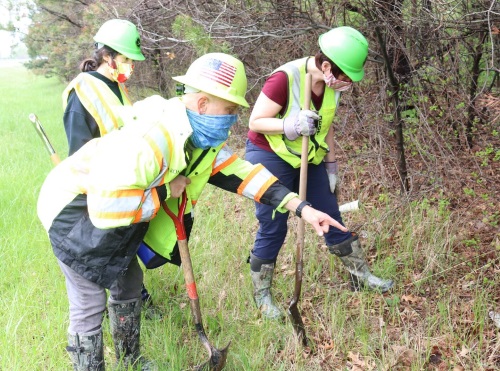Industry experts joined state department of transportation managers to discuss new workforce management strategies in a knowledge session hosted during the American Association of State Highway and Transportation Officials 2021 virtual spring meeting.
[Above photo by the Alaska DOT&PF]
“The last 18 months has given us new perspective on our workforce and what we want it to do,” said Amanda Holland, acting commissioner of Administration for the State of Alaska.
“We are now looking at long-term remote work and other changes,” she explained. “We’re finding that ‘workforce readiness’ now requires a ‘systematic approach’ as we adjust over the next two to three years in order to become more nimble and responsive to clients and customers.”

Karin van Dyck, human resources director for the Minnesota Department of Transportation, said a recent survey found the COVID-19 pandemic “negatively affected 42 percent of her agency’s workforce “engagement” effort. “We’re also seeing a surge in positions going unfilled,” Dyck added.
She also noted that during the pandemic 70 percent of Minnesota DOT’s workforce continued to work on site, but now 70 percent want to continue teleworking on at least a part time basis.
“So right now we’re in the process of collecting ‘return to work’ information to find out what our employees’ preferences are,” Dyck said. “Some really want to come back to work full time, while others want to continue teleworking. And more telework means more upskilling for supervisors, to help them learn how to create and manage workforce engagement in either an all-virtual or hybrid work environment.”
She added that Minnesota DOT also aims to ensure it has “one agency workforce plan. We’re taking an inventory of all the work trends now coming at us and looking for ways to manage them,” Dyck noted.

Nicole Overley, a senior manager with Deloitte Consulting, said this process is all about transitioning to the “next normal” in the workplace experience.
“It’s about equipping managers, supervisors, and teams to work more flexibly than before – to look more closely at the nature of work and take into account preferences of the individual,” she said. “This is a moment in time to think about that in strategic ways and how to communicate more effectively and help everyone understand how to contribute to the broader mission in these new circumstances.”
Overly said that can translate into allowing greater flexibility at the team level about working remotely at one site, or being in the office at another.
“We need a more fundamental understanding of what enables most productivity and engagement with the workforce,” she stressed. “This is an opportunity for a ‘grand experiment’ as none of us know what this year will look like. It is trying out flexibility and seeing how we adapt to it.”

Katriona Lord-Levins, chief success officer and senior vice president for Bentley Systems, said data would be the key to all of this.
“Making more data-driven decisions is how we achieve real solid outcomes,” she explained. “It’s about finding a [workforce management] tool that works for you. What is the leading indicator that drives your workforce day-to-day so people feel empowered and attain success? What is that ‘north star’ metric that will guide you? As we get polling data from our colleagues, we will see what the future looks like.”
William Sharp, senior vice president for HDR Inc., added that it will be “really important” for supervisors to align their staff with an agency’s business needs as interactions between employees and supervisors critical for long-term retention.

“It will be about offering more growth opportunities, allowing employees to transfer to other areas to take on new projects,” he explained. “This is a critical time for all of us and we need to tread very carefully. Transportation workforce changes will be extensive over the next two to three years: demographics will shift, more women will be in the workforce as breadwinners and leaders, and the workforce will be more diverse overall.”
To that end, a “diversity, equity, inclusion” or “DEI mindset” represents a new paradigm within the transportation workforce – and not just in terms of people but in terms of skill sets as well.
“We need to rethink our new hires – not all of them will be engineers and planners,” he said. “We’ll need data analytics folks and other different skill sets than in the past. We really need to think about staff hiring and training, plus how projects align with staff interest.”
And as the industry moves past the pandemic, what does the new normal look like?
“How do we maintain the culture and teamwork needed to complete projects, but also maintain work-life balance and the desire to work from home? In the end, the workforce of tomorrow will be very different from the workforce of today,” Sharp noted. “So we need to refocus our organizations to be in alignment with future skill sets and needs.”



